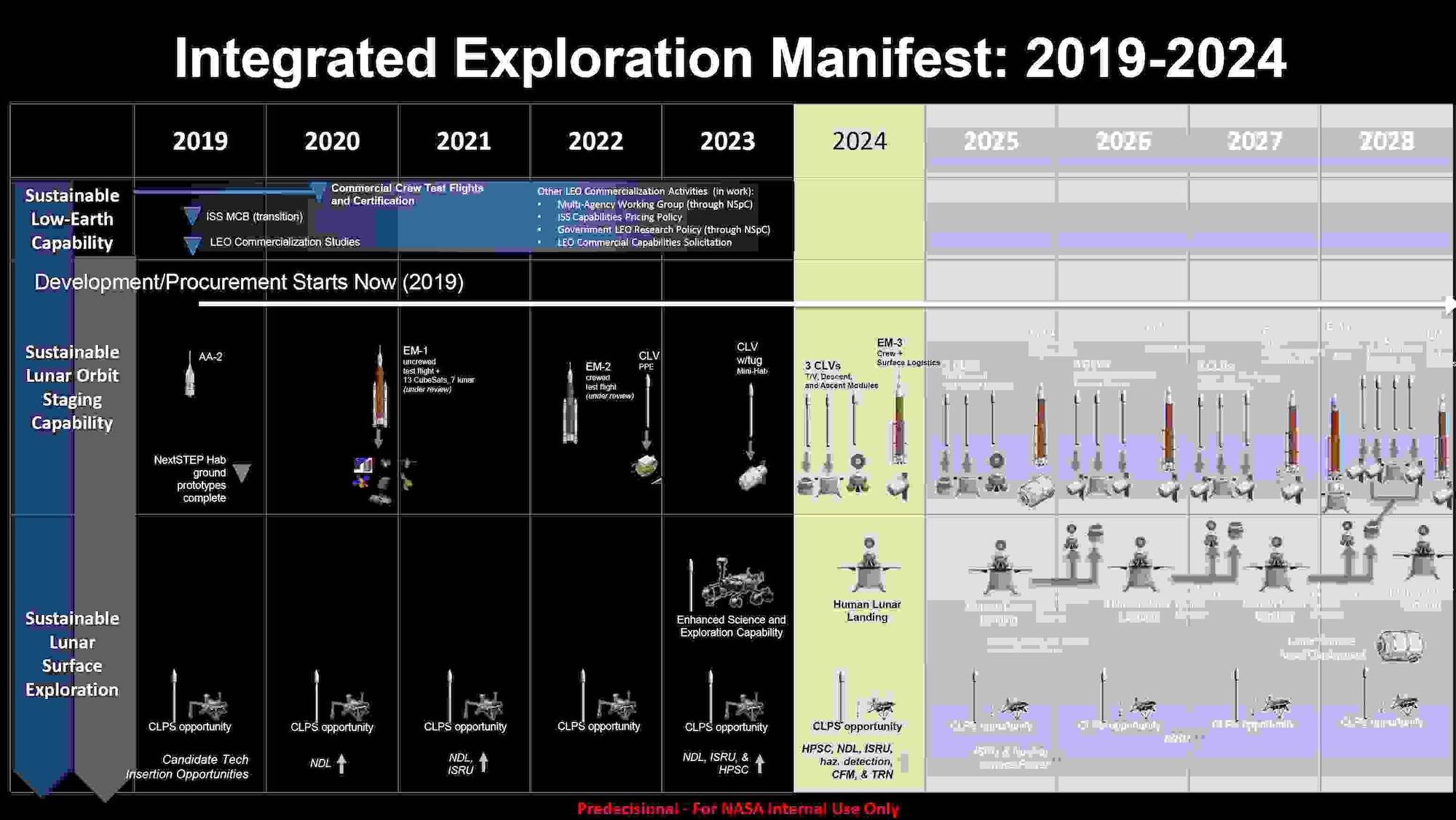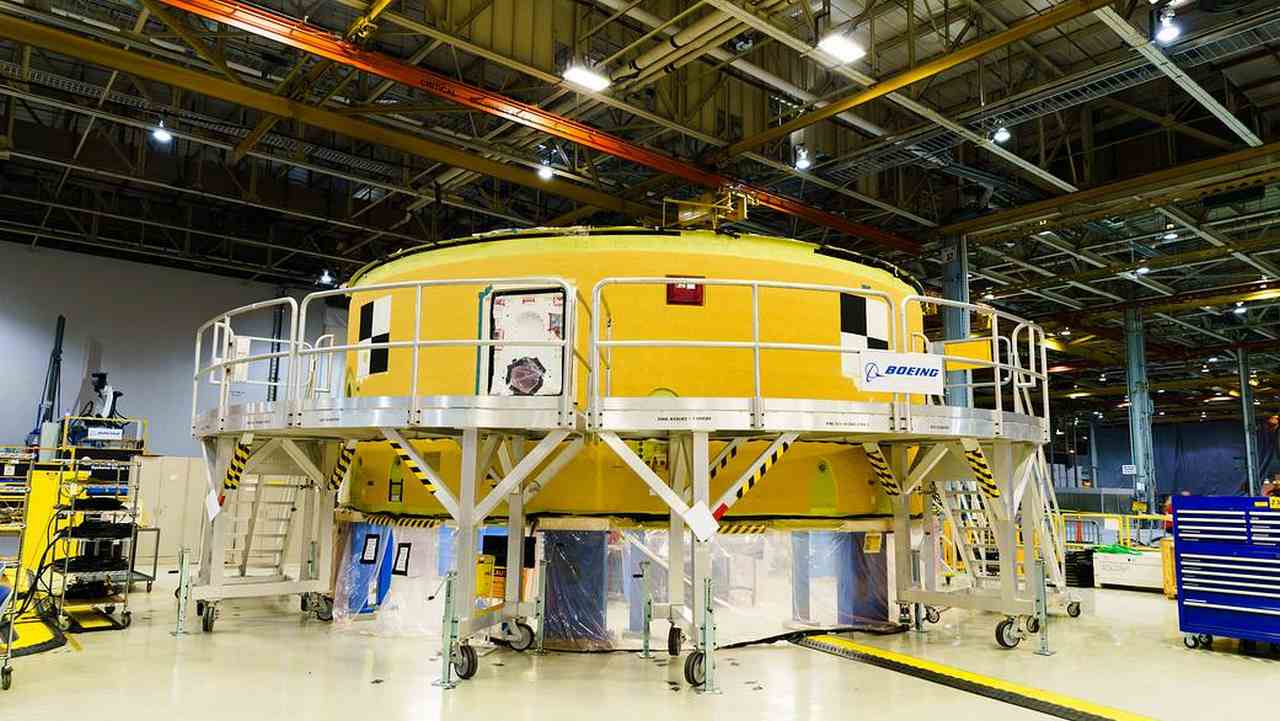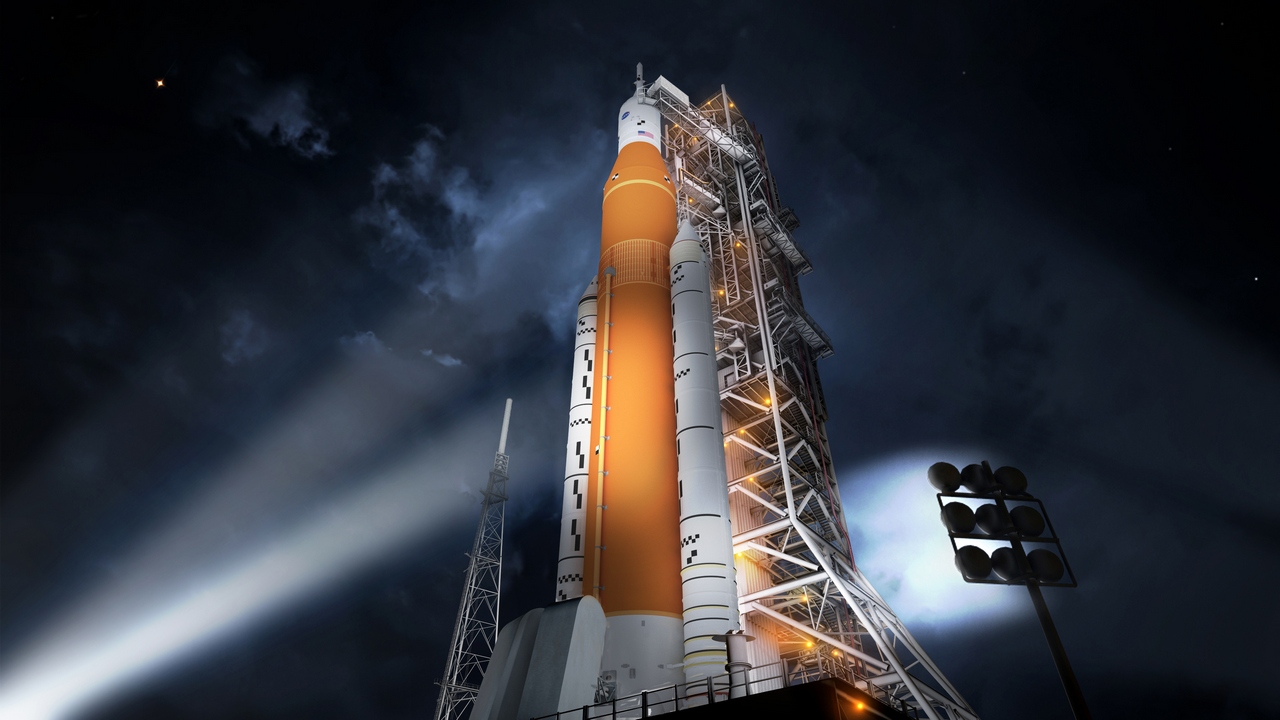America’s space agency NASA has mapped out its decade-old long plan leading up to having a permanent moon base by 2028. In a cool
scoop, Ars Technica
managed to get access to some of NASA’s unofficial plans. The detailed plans include 37 launches to the Moon, more than one human lunar mission and a combination of approaches to meet the tight new deadline NASA has been handed: 2024. The deadline set by the US Prime Minister Pence for the Artemis mission is very ambitious, especially considering
NASA isn’t technically prepared to send humans to the Moon
in five years time. But the heavy push from the US government to establish a permanent presence on the Moon before anyone else in the space race appears to have got NASA in beg-borrow-and-steal-mode to make it happen. Could they (for a second time) bring in a new era in manned space exploration in just five years? Here’s an outline of NASA’s plan of action, as per the Ars Technica
report
:  As the report in Ars
points out
, one thing missing from the sketches is the cost. NASA
received a $1.6 billion advance on their 2020 budget
to get working on their Moon lander right away. According to the Ars
report
, the projected cost is $6-8 billion a year on top of the existing NASA budget of $20 billion. Cost aside, one significant problem is mission hardware. NASA has outsourced the building of the Moon-faring
Space Launch System
rocket’s
core engine to Boeing
. It’s been
eight years since Boeing began construction
for the SLS engine, which is still a year or two away from completion. At the current pace, it seems unimaginable that Boeing delivers on even 10 of the 30+ rockets planned over the next ten years. [caption id=“attachment_4870681” align=“alignnone” width=“1280”]
As the report in Ars
points out
, one thing missing from the sketches is the cost. NASA
received a $1.6 billion advance on their 2020 budget
to get working on their Moon lander right away. According to the Ars
report
, the projected cost is $6-8 billion a year on top of the existing NASA budget of $20 billion. Cost aside, one significant problem is mission hardware. NASA has outsourced the building of the Moon-faring
Space Launch System
rocket’s
core engine to Boeing
. It’s been
eight years since Boeing began construction
for the SLS engine, which is still a year or two away from completion. At the current pace, it seems unimaginable that Boeing delivers on even 10 of the 30+ rockets planned over the next ten years. [caption id=“attachment_4870681” align=“alignnone” width=“1280”] The first major piece of core stage hardware for NASA’s Space Launch System rocket has been assembled and is ready to be joined with other hardware for Exploration Mission-1. The forward skirt will connect the upper part of the rocket to the core stage and house many of the flight computers, or avionics. Image: NASA[/caption] NASA has taken some quick steps of later awarding contracts for some of the components that go into the lunar lander. While that could still be planned and delivered in a relatively predictable manner, the
political landscape is a lot dicier
. With President Donald Trump’s current term ending right during NASA’s peak mission prep, his not being re-elected could disrupt schedules and mess with the mission’s budget, Ars
reports
. It is heartening, though, to see that plans for the next humans on the Moon are finally on paper.
The first major piece of core stage hardware for NASA’s Space Launch System rocket has been assembled and is ready to be joined with other hardware for Exploration Mission-1. The forward skirt will connect the upper part of the rocket to the core stage and house many of the flight computers, or avionics. Image: NASA[/caption] NASA has taken some quick steps of later awarding contracts for some of the components that go into the lunar lander. While that could still be planned and delivered in a relatively predictable manner, the
political landscape is a lot dicier
. With President Donald Trump’s current term ending right during NASA’s peak mission prep, his not being re-elected could disrupt schedules and mess with the mission’s budget, Ars
reports
. It is heartening, though, to see that plans for the next humans on the Moon are finally on paper.
NASA’s Artemis mission gameplan involves 37 launches and a base on the Moon
tech2 News Staff
• May 26, 2019, 10:45:44 IST
NASA is aiming to herald a new era in manned space exploration (a second time) under a tight, 5-year deadline.
Advertisement
)
End of Article